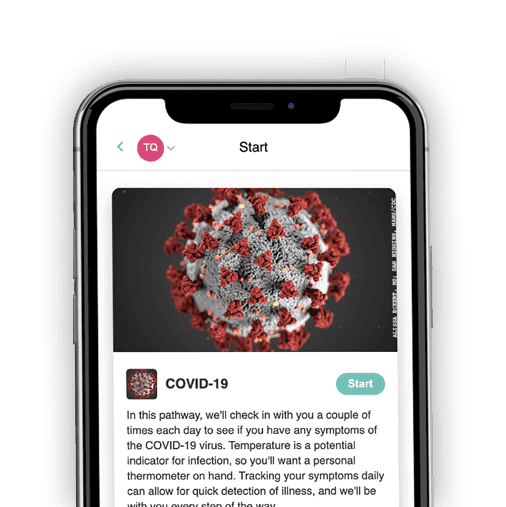The roadmap for reopening and re-engaging Michigan’s economy in the midst of the COVID-19 pandemic has been published. Is your company ready?
As the global COVID-19 pandemic deepened, Michigan enacted one of the strictest stay-at-home orders in the nation, starting on March 24. Nearly three months later, as Michigan businesses start returning to work or bringing more of their operations online, they now face important state-mandated requirements.
The reopening or “return to work” requirements are designed to prevent a dramatic resurgence in COVID-19 cases in Michigan as of June, which has seen almost 70,000 COVID-19 cases and more than 6,000 COVID-related deaths in the three months since the virus first emerged in the state. These requirements are among the more stringent in the nation but are based on guidelines from the Centers for Disease Control and Prevention (CDC).
Michigan has been one of the hardest-hit states in the U.S. But through its aggressive efforts to combat COVID-19, Michigan has flattened the curve and started to take steps to reopen many parts of its economy.
Michigan’s efforts to combat the COVID-19 pandemic
The state had enacted its emergency operations center on February 28, as news of Coronavirus cases emerged in the United States. By March 10, Michigan had confirmed its first two COVID-19 cases, and the state began issuing calls for social distancing. By March 13, all Michigan K-12 schools were closed, and gatherings of more than 250 attendees were banned.
As COVID-19 cases continued to rise, the state and many localities began issuing pandemic control and prevention measures. As statewide cases reached 50, Governor Gretchen Whitmer issued an order closing most public spaces, including gyms, theaters, cafes, bars and dine-in restaurants on March 16.
The next day, March 17, Michigan confirmed its first COVID-related death, as total cases exceeded 100 in the state. Over the next week, the number of cases and deaths continued to increase dramatically.
On March 23, Gov. Whitmer issued a statewide “stay at home” order for everyone in Michigan, except for essential workers, with exceptions for specific circumstances. This order was for three weeks beginning the next day, March 24. By April 1, this was combined with a state of disaster declaration.
On April 9, the governor extended the “stay at home” order to at least April 30. Before the end of the month, however, Gov. Whitmer extended the order to May 15, while relaxing restrictions on certain businesses. The order also required the wearing of facial coverings when in enclosed public spaces.
The reopening or “return to work” requirements are designed to prevent a dramatic resurgence in COVID-19 cases in Michigan, which has seen almost 70,000 COVID-19 cases and more than 6,000 COVID-related deaths in the three months since the virus first emerged in the state. These requirements are among the more stringent in the nation but are based on guidelines from the Centers for Disease Control and Prevention (CDC).
The state of emergency and “stay at home” orders were further extended to May 28, with a fourth extension taking the order to June 12. However, the governor lifted the order on June 1, announcing that the entire state has moved into Phase 4 of Michigan’s recovery plan.
Reopening Michigan’s businesses (and economy) during a pandemic
Michigan’s efforts to combat the COVID-19 pandemic began entering a new phase, especially as the state has successfully managed to flatten the curve and pressure has mounted to re-open businesses and allow freer movement of its residents. While new cases and COVID-related deaths continue to occur, calls to begin transitioning from the current “stay at home” order have grown.
Easy COVID-19 tracking for your business.

As early as late April and early May, Gov. Whitmer worked with leaders in healthcare, business, labor and education to create the MI Safe Start Plan, which was revealed on May 9. On June 1, the stay-at-home order lifted and currently all regions in Michigan have progressed to phase four or five of this plan.
Michigan has reached a tricky crossroads in the reopening process. As different states have seen massive spikes in new cases since reopening their economies, Michigan’s COVID-19 numbers have remained low. Gov. Whitmer stated, “As we continue to slowly reopen different parts of our state, it’s critical that we listen to the experts and follow the medical science to avoid a second wave of infections.”
Stages of Michigan’s Safe Start Plan
The Michigan Safe Start Plan provides a roadmap for how Michigan’s economy will continue to re-engage while keeping its communities safe.
The lifting of restrictions will be based on the state of the pandemic in different regions of Michigan. Because different parts of the state may be in different stages, restrictions may vary slightly from one county to another.
The state has progressed gradually and safely through the pandemic phases, which are summarized below:
The most populous regions in Michigan are currently in phase four. With the massive spikes of COVID-19 experienced in multiple states, these regions are expected to remain in this phase indefinitely.
- Phase 1 – Uncontrolled growth: as seen in the first months of the COVID-19 pandemic, phase 1 is marked by an increasing number of new cases every day. Such increases are likely to overwhelm the healthcare system, so only critical infrastructure and essential businesses should remain open.
- Phase 2 – Persistent spread: as Michigan and many parts of the nation saw in April, this phase is marked by continued high levels of new cases, resulting in growing concern about the state’s healthcare system capacity to handle the crisis. During this period, only critical infrastructure and essential businesses are to remain open, with lower-risk recreational activities allowed.
- Phase 3 – Flattening: this phase is marked by the leveling off new COVID-19 cases, along with improved confidence that the state’s healthcare system capacity is sufficient for current needs. Much of the state entered this period in May. Specified lower-risk businesses can reopen as long as they adhere to strict safety measures.
- Phase 4 – Improving: as the number of new cases decrease, along with increased testing and contact tracing measures, there is increased confidence in the state’s healthcare system capacity. Additional businesses can reopen, as long as they adhere to strict safety measures.
- Phase 5 – Containing: this phase is marked by extremely low levels of new and current cases. While new cases still do arise and outbreaks may happen, the state is now able to quickly contain new cases. Overall, the state’s healthcare system capacity is strong with robust testing and tracing. Most businesses can reopen as long as they adhere to strict safety measures.
- Phase 6 – Post-pandemic: community spread is not expected to return (e.g., because of a vaccine) and the economy is to reopen.
The most populous regions in Michigan are currently in phase four. With the massive spikes of COVID-19 experienced in multiple states, these regions are expected to remain in this phase indefinitely.
Most businesses and organizations in the state have opened under strict safety measures and include the guidelines summarized below.
Phase 4 (Improving):
- Retail: Permitted with additional safety measures and guidelines (e.g., limited capacity)
- Public Transportation: Permitted
- Restaurants and bars: Available for take-out, delivery and drive-through only
- Manufacturing: Permitted with additional safety measures and guidelines
- Construction: Permitted with additional safety measures and guidelines
- Food and agriculture: Permitted
- Offices: Open (remote work still required where feasible)
- Education: Remote learning in K-12 and higher education, summer programs in small groups
- Outdoor work: Permitted with additional safety measures and guidelines
Phase 5 (Containing):
Currently regions six and eight are in phase five of reopening. Most businesses and organizations are open throughout this phase, but are under strict safety measures and include the following guidelines:
- Retail: Permitted with additional safety measures and guidelines (e.g., limited capacity)
- Public transportation: Permitted
- Restaurants and bars: Available for dine-in with additional safety measures and guidelines
- Manufacturing: Permitted with additional safety measures and guidelines
- Construction: Permitted with additional safety measures and guidelines
- Food and agriculture: Permitted
- Offices: Open with additional safety measures and guidelines
- Education: Live instruction in K-12 and higher education
- Outdoor work: Permitted with additional safety measures and guidelines.
What Michigan businesses and organizations need to reopen (or continue operating)
Gov. Gretchen Whitmer signed an executive order laying out extensive workplace safety requirements for businesses to adhere to as they reopen.
For starters, all businesses are required to have a written COVID-19 preparedness and response plan within two weeks of reopening that’s consistent with Occupational Health and Safety Administration regulations. The plan must be “made readily available to employees, labor unions, and customers, whether via website, internal network or by hard copy,” according to the governor’s order.
The following workplace checklist is provided to employers to assist in their reopening plans. It is based on the Michigan Occupational Safety and Health Administration (MIOSHA) guidelines and can be located here.
Although wording is slightly different in the checklist, MIOSHA includes the following key elements that all businesses must adhere to as summarized below (guidelines may differ depending on risk exposure):
- Documented plan. Each business or organization must develop an “Exposure Control Plan.”
- Assign leaders. To properly manage the implementation of this plan, businesses and organizations must identify one or more workplace COVID-19 coordinators or supervisors to monitor that group’s COVID-19 control strategies. One of these designated individuals must always be present when workers are on site.
- Update policies. Businesses and organizations should examine and update their policies to ensure they align with new COVID-19 procedures and protocols.
- Identify what is essential. Companies should review their operations and identify the employees and business functions that are deemed as essential.
- Update communication. If they haven’t already, organizations and businesses should establish a chain of communication to ensure that information, updates and announcements are distributed as efficiently as possible.
- Train employees. Safeguarding workers and workplaces require participation from everyone. Businesses and organizations should train employees on the new procedures and policies that are being implemented – and continue to train them as needed.
- Inspect infrastructure systems. Businesses and organizations should inspect their worksite’s systems, including their HVAC and mechanical systems, water systems and cooling towers.
- Establish employee pre-screening. To help prevent COVID-19 from entering the workplace, an employee pre-screening procedure must be developed and implemented. This procedure should check for temperature and other COVID-19 symptoms (cough, fever, shortness of breath) prior to work, every day.
- Employee requirement. Companies will need to instruct and train all their employees on new COVID-related requirements, especially with regard to reporting symptoms and mandated self-isolation. These requirements include…
- Employees notifying supervisors and staying home if they do have any symptoms.
- Prohibiting employees from returning to work until CDC home isolation criteria are met.
- Organizations informing other employees of possible workplace exposure, while complying with ADA (Americans with Disability Act) and HIPAA (Health Insurance Portability & Accountability Act) confidentiality requirements.
- Implement social distancing. Companies and organizations must implement and enforce social distancing guidelines, so as to prevent the spread of COVID-19 inside the workplace. The basic rule is that workers should be separated by a minimum of six feet. These guidelines include…
- Adequately spacing workstations
- Providing demarcation lines
- Installing physical barriers between customers and/or employees
- Provide PPE as needed. Businesses and organizations should be prepared to provide personal protective equipment such as face coverings, especially if it is not possible to keep employees six feet apart.
With regard to #8 (“employee prescreening”), the Calcium COVID-19 employer solution is currently helping several Michigan employers automate this process. The Calcium COVID-19 app allows employees to prescreen themselves before leaving for work – in less than a minute. For more information, visit the Calcium COVID-19 Employee Prescreening App page.
Easy COVID-19 tracking for your business.

Properly cleaned and disinfected working areas are important for preventing the spread of COVID-19 in the workplace. In addition to ensuring there are adequate cleaning and disinfecting supplies for all areas, employers should enlist employees to do their part in keeping their workspaces clean and disinfected.
Specific cleaning and disinfecting tips include…
- The employer should routinely clean and disinfect all areas such as offices, bathrooms, common areas, and shared electronic equipment.
- If a sick employee is suspected or confirmed to have COVID-19, perform enhanced cleaning and disinfection of all frequently touched surfaces in the workplace.
- Follow the manufacturer’s instructions for all cleaning and disinfection products (e.g., required PPE, concentration, application method and contact time).
- Evaluate procedures to ensure no new hazards are created (e.g. dermatitis from new disinfectant)
Employers must establish specific protocols and procedures when an employee becomes sick with or exhibits COVID-19 symptoms in the workplace:
- Employer should follow their established reporting procedures
- Employees must report when they are sick or experiencing symptoms of COVID-19
- Employers must notify the local health department IMMEDIATELY and any co-workers, contractors, or suppliers who may have come into contact with the person with a confirmed case of COVID-19 within 24 hours.
- Employers must record COVID-19 illnesses on the MIOSHA 300 Log
- COVID-19 is a reportable illness and must be reported by the employer if…
- The COVID-19 case is confirmed as defined by CDC
- Work-related as defined by MIOSHA
- Involves one or more of the general recording criteria
Employers are prohibited from firing, disciplining “or otherwise retaliating against employees who stay home or who leave work when they are at particular risk of infecting others with COVID-19.
If an employee is required to stay home because of COVID-related symptoms or has been diagnosed with and recovered from COVID-19, employers should establish the following requirements before allowing that employee back to work:
- At least 3 days (72 hours) without fever (without use of fever-reducing medications) AND
- Improvement in respiratory symptoms (cough/shortness of breath) AND
- At least 10 days have passed since symptoms first appeared.
Elements of COVID-19 employee training should include:
- Routes by which COVID-19 is transmitted from person to person
- Distance that COVID-19 can travel in the air
- How long COVID-19 remains viable in the air and on environmental surfaces
- Signs and symptoms of COVID-19
- Steps the employee must take to notify the employer of signs and symptoms of COVID-19 or suspected or confirmed diagnosis of COVID-19
- Measures the employer is implementing to prevent employee exposure to COVID-19 as described in the employer’s exposure control plan
- Steps the employee must take to prevent their exposure to COVID-19 including hand hygiene and proper use of personal protective equipment (PPE)
- Review of new policies and procedures (remote/telework duties, employee sick policy, employee leave policy)
- Screening Procedures
- New Controls, such as barriers, drive-thru/pick-up policies, cleaning of workspace, PPE requirements, training on new disinfectant chemicals, changes in shift schedules, etc.
For more information, please review the MIOSHA guidelines.
For industry specific guidelines, the Department of Labor and Economic Opportunity, in collaboration with leaders and experts from industry, and state and local public health, has developed the following best practice guidelines to help industry employers understand the requirements under the governor’s MI Safe Start Plan.
How Michigan intends to enforce its COVID-19 guidelines
The governor signed an executive directive that allows the director of the Department of Labor and Economic Opportunity to appoint a director of COVID-19 workplace safety to coordinate state efforts to monitor and enforce workplace safeguards.
State agencies that enforce workplace safety regulations will be required to publicly post citations against employers that fail to follow the rules outlined in Whitmer’s workplace safety order. The governor also declared that employers are prohibited from firing, disciplining “or otherwise retaliating against employees who stay home or who leave work when they are at particular risk of infecting others with COVID-19.”
Michigan also published an Interim Enforcement Plan that establishes policies and procedures for handling complaints alleging hazards related to coronavirus (SARS-CoV-2 virus) and coronavirus disease 2019 (COVID-19).
Michigan businesses and organizations are leading the way back
“The vast majority of Michigan businesses are doing their part to slow the spread of COVID-19, but we must do more to ensure Michiganders are safe at work,” Governor Whitmer said in a statement. “This executive order, and the director of COVID-19 workplace safety, will help ensure employers take the needed measures to protect workers and customers from the spread of COVID-19,” she said.
By maintaining lower numbers while the state steadily reopens, Michiganders are suggesting they can handle fewer restrictions without sparking another major spread of the virus!
The key challenge for Michigan business and organizations – as well as its residents – is continued adherence to guidelines that have been proven to work. COVID-19 apps and PPE can help, but successfully defeating the pandemic requires everyone’s participation.
Easy COVID-19 tracking for your business.


















